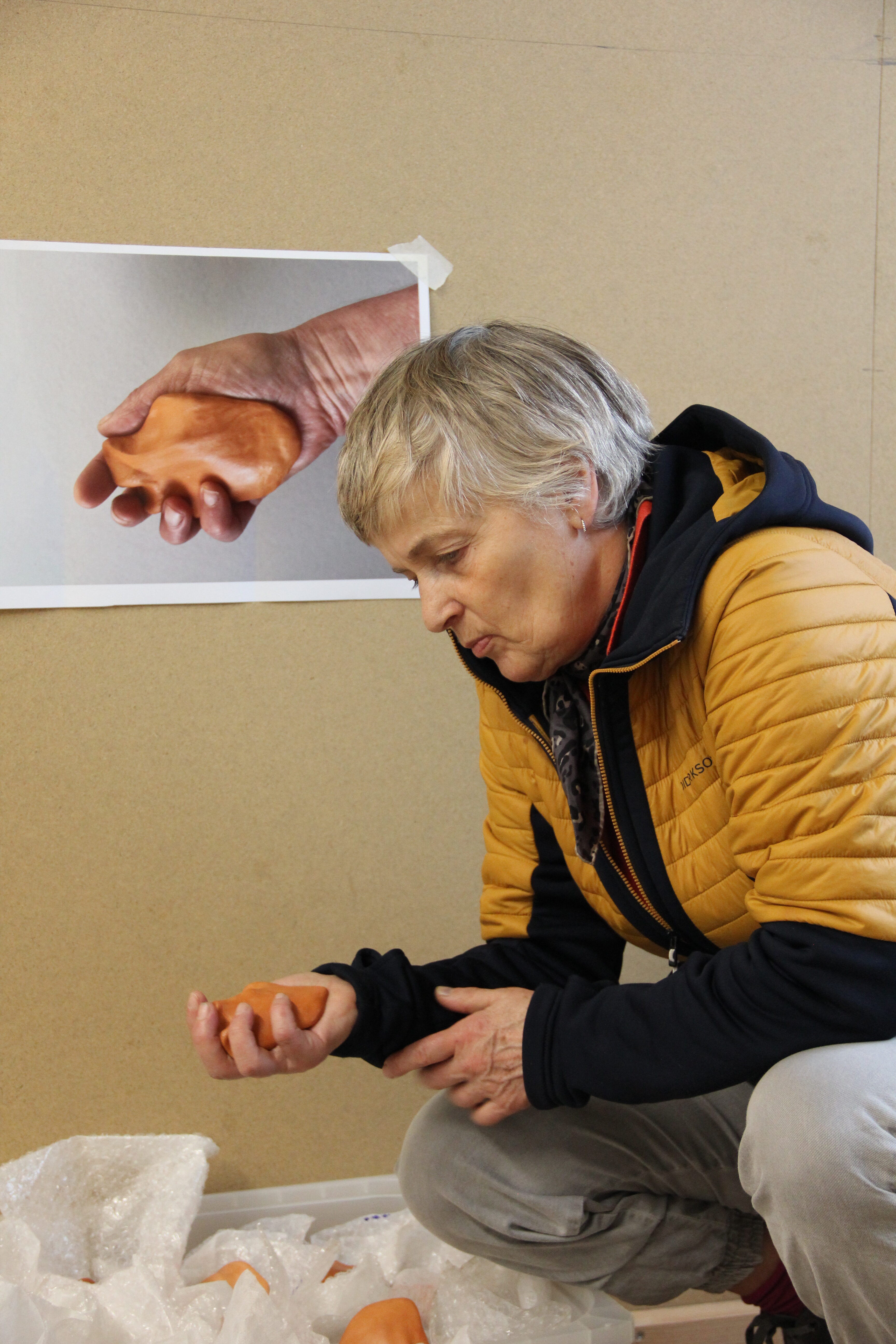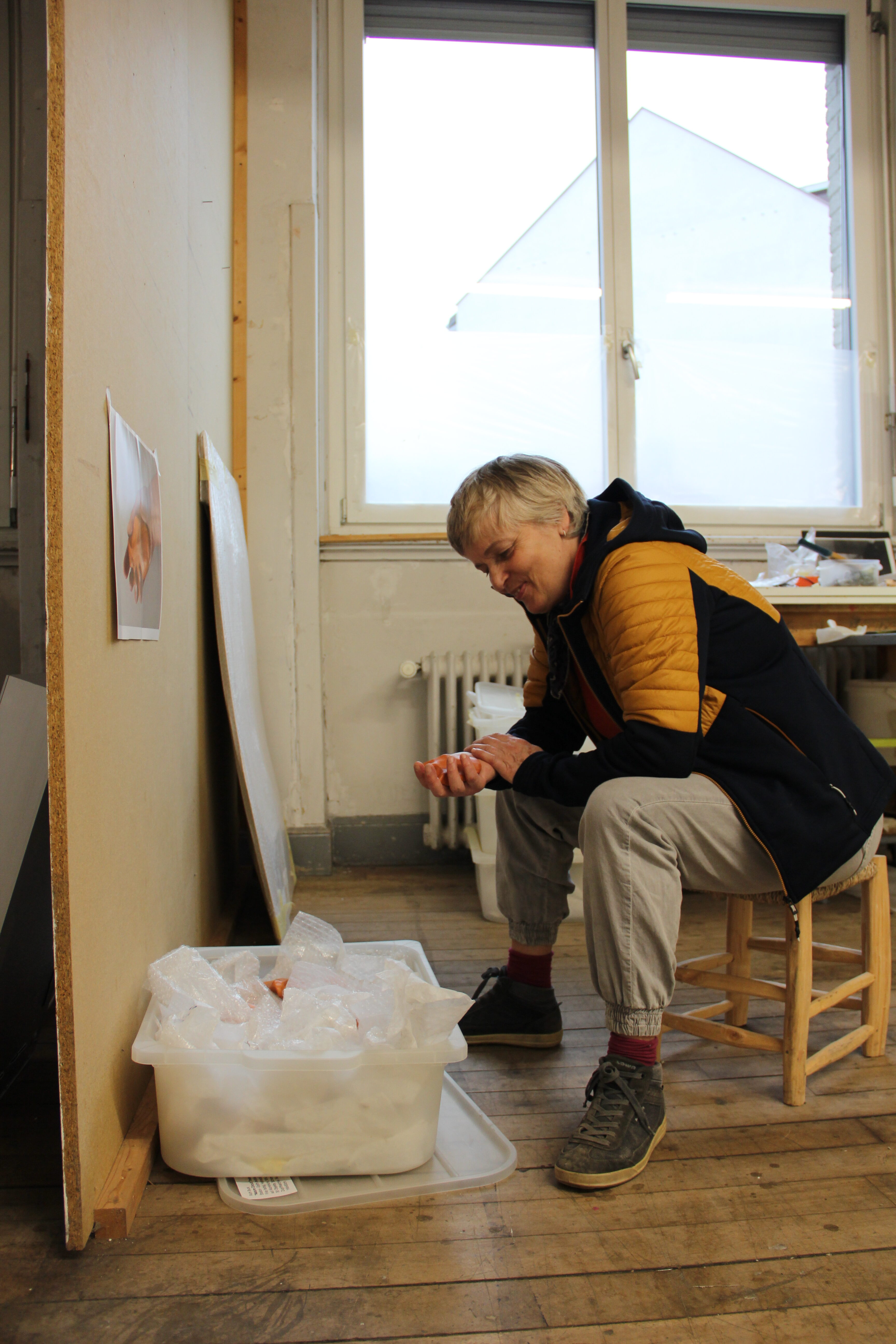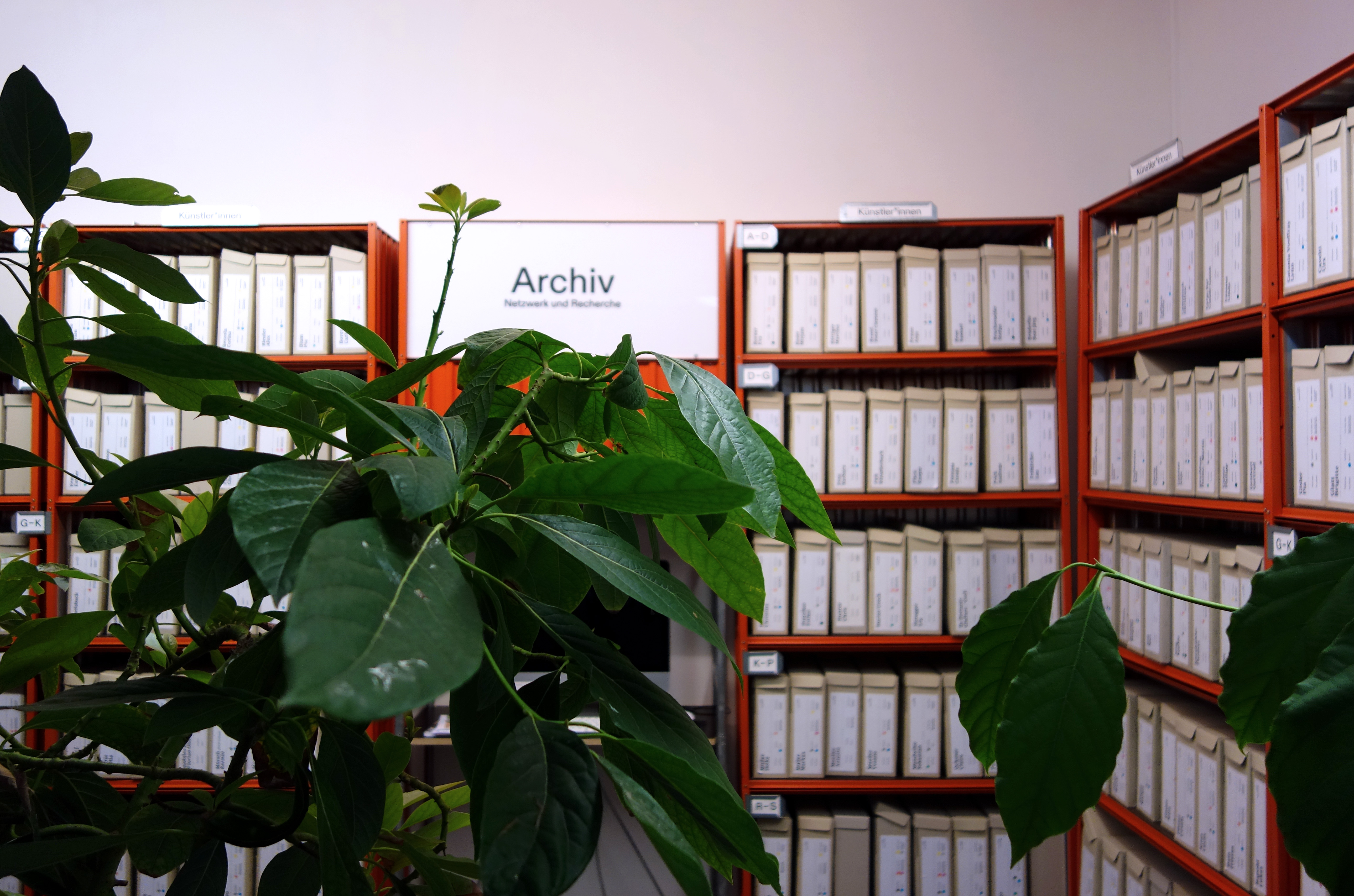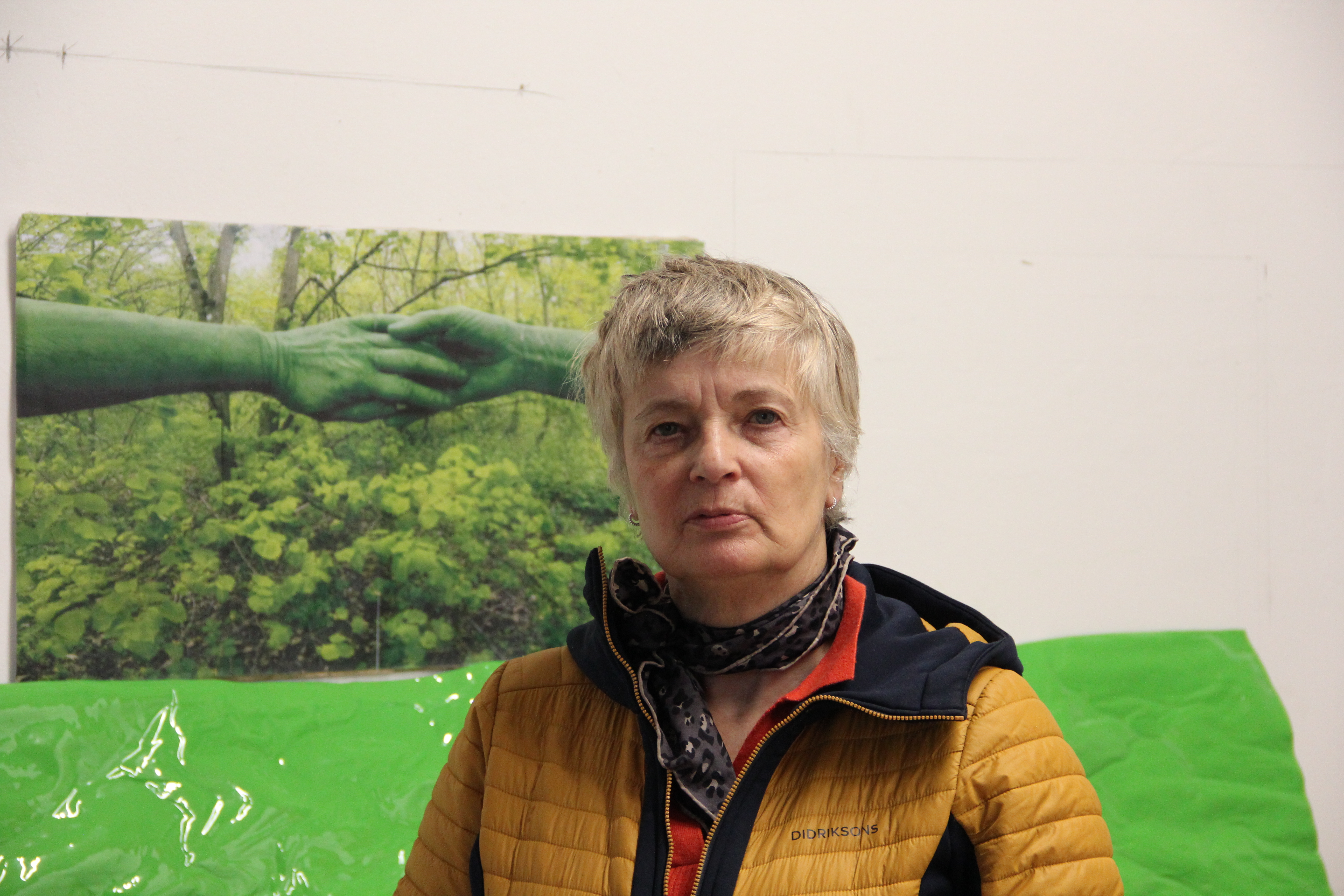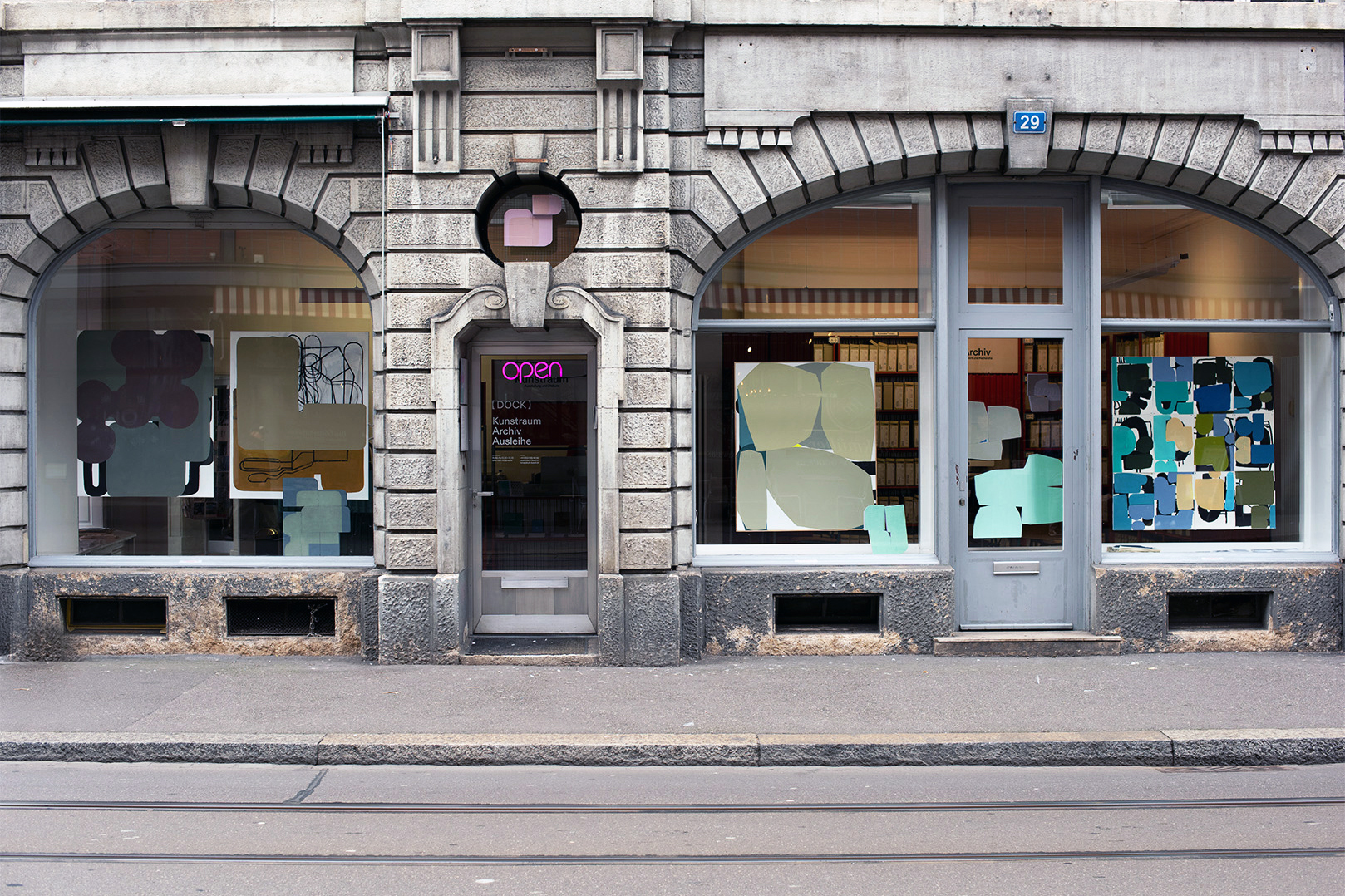Out & About: Where did your motivation to found a site of documentation for local art and to research the idea of a living archive come from at that time?
Ruth Buck: In Basel, many local artists were not noticed enough. My impression was that only certain and always the same ones were supported by the funding bodies. There were different groups of artists who separated themselves from the others. They didn’t work together, but rather competed with each other. There was little overarching. I didn’t like this demarcating behavior of some groups and that local artists didn’t have a common platform where they were perceived. The international scene in Basel has always been very prominent and a lot of money has been put into it. For regional artists, however, relatively little was happening at the time. In 2005, I started researching, approached other artists, exchanged ideas and then founded DOCK with other fellow campaigners.
Multiplicity (another word would be diversity, richness, abundance, difference, chaos) is a basic building block of DOCK. It is similar to an organism or in nature; diversity enables life. And life becomes more alive. With each other, with the environment.
The archive was founded with the idea of giving local art more visibility and to display the artists represented there without hierarchy, on one level. At the same time, it was also about providing a low-threshold access to the interested public. Were there other basic ideas that influenced the archive, such as enabling networks?
At that time, we first founded an association of 3 people and then started with research as a base for everything else. From the beginning, various artists of different generations were involved. Networks were an important topic, so we organized a “roundtable” together with the department of culture at the time, in order to ask the local actors about the matter of the local archive. Various artists, mediators, but also representatives of the Kunsthalle, other museums, galleries, the Liste and all interested parties were invited to deal with the question of the local archive and whether such an archive was needed at all. At that time, “local” was rather a non-word. During and through this research and questioning, a kind of network emerged at the same time. And it became clear from many sides that this archive was needed and that it was desired. This was an important starting point.
At that time, there was no broad intergenerational community in the narrower sense. The archive we started with was still relatively small and unstable, somewhat neglected, and in part still stemmed from its time in Kasko. There, as in other offspace locations such as Bern (Stadtgalerie) or Lucerne (now Kunsthalle), the archive idea had been cultivated for years. From this foundation, we began to develop a loose concept based on the guiding idea of a “living archive”.
It took many years to build up networks and we were always asked: Why so many areas and why so diverse? Actually, nobody wanted that at that time. Always focus, which can also mean delimitation. But it was always clear to me that diversity has great potential.
How has the situation in the art scene changed from today? Do you see a development in relation to the isolation of that time?
I think it has changed very positively! I see that all the people involved, who worked at the grassroots level, did a really great job. Even though it may not have been perceived that way on the outside at the beginning, and the first 10 years were an ongoing struggle to ensure Dock’s survival, because financing was difficult and consumed a lot of resources. But now in retrospect, our work, what we developed and accomplish, is seen and recognized. Even “local art” has a different status in the meantime. We are happy about that.
The different scenes and also closed artist groups still exist, but they have become more open. Social developments have supported our concerns all these years and have shown us that we were well in time. It took many years to build up networks and we were always asked: Why so many areas and why so diverse? Actually, nobody wanted that at that time. Always focus, which can also mean delimitation. But it was always clear to me that diversity has great potential. We then included various networks in our program, such as the Fachhochschule Institut Kunst with an annual exhibition, the Atelier Mondial with artists from other countries, and the art history seminar at the university. The network with the institutes was very important for the development of DOCK. Many interns, future mediators and curators are still involved in DOCK, wherever they are professionally nowadays. And that’s just a huge pleasure to see how it all works together. The networking and the exchange were important building blocks to get communication going about local artists and their visibility in the fabric of Basel as an international art city.
You mentioned the challenging financial situation. How did DOCK finance itself and how has the situation developed?
It took a long haul for DOCK to get to where it is now. By the way, you can read about all the changes and developments in our annual reports. When the project development started around 2009 until about 2019, it was not a question of principle to pay cultural work at all and adequately. Even now it is still an issue and not a matter of course. Colleagues from other Off Spaces have also found my intention in this regard outrageous: “Forget it, you cannot do that.” But for me it was important that work on the “artistic humus” has to be paid. Free work was not an option.
The consequence of this was that a lot of time had to be invested in fundraising. But in addition to the funding, important and supporting networks have developed from this. We develop at our own pace – and funding has always been a brake on our possibilities. For example, the Presidential Department of Basel, as an important and valued funding starter, never increased the financial support they gave in the early days over the years, even though the project became more professional from year to year and we grew into a recognized platform. On the one hand, we were naturally reassured by this mainstay, but we had hoped for a little more recognition in the form of funding for our work, which would have meant more opportunities for development. We then simply had to realize that the financing remains difficult, that we have no planning security every year anew and that we have to consider this as normal and not let ourselves be stressed by it. Unfortunately, our efforts to win a local patron have not yet borne fruit. That would be a much appreciated booster.
I believe that the DOCK is no longer exclusively about artists, but also about where art can immerse itself in new contexts and find new homes.
Looking to the future: What changes would be needed? Also to connect artists better with each other? In your opinion, do we need more and new networks at all?
Yes, now is a good time to network in many areas, most people want to and many are interested in doing so. I believe that the DOCK is no longer exclusively about artists, but also about where art can immerse itself in new contexts and find new homes. In recent years, we have been able to try out a lot outside the White Cube with neighborhood projects and also with the location on Klybeckstrasse. This has also led to the idea of the art lending service, which has had to wait a few years for its appearance due to a lack of funds. Now, however, it is taking off. The new project found sponsors and the operating team is now busy with the professional implementation.
As always, DOCK is trying to bridge the gap to the general public with the loan of art, thus enabling even small budgets to have original art in their spaces and at the same time supplementing the budget of the artists. In addition, it is also nice that we have aroused interest among companies. Who knows where the future will take us? Right now, in these changeable times, DOCK will change and transform again with a new crew and hopefully continue to support some of the existing parts.
Do you think that such structures as DOCK promotes could also be good for very specific purposes, such as feminist exchange? Do you have ideas there, would that be a focus that DOCK could strengthen?
Feminism has always been there too; maybe not in the way it is now, so exposed fresh and new. It did indeed show up for the cause. For me, feminism and activism was/is something natural and related. Feminism was/is also often addressed in works by artists. Off Spaces were often developed by women and especially sustainable projects like DOCK or Kasko have long lists of committed women. Most of them worked for low wages or for free. More and more, we have tried to get men involved in cultural work as well. We have succeeded to some extent. Of course, it’s exciting to give feminist exchange and its development space in the DOCK and to see what happens with it. It is exciting to tackle these questions across generations. I think it’s important to be on the pulse of the times, like now with transition, sometimes you’re a little ahead, sometimes you’re in the middle, sometimes it’s good to be somewhere completely different.
It is exciting to tackle these questions across generations. I think it’s important to be on the pulse of the times, like now with transition, sometimes you’re a little ahead, sometimes you’re in the middle, sometimes it’s good to be somewhere completely different.
Where and how do we deal with feminism? Certainly in everyday life. Or in our own artistic practice, with a project, in our work? It’s incredible that this topic still has a lot of need for development. I’m always shocked and can’t believe that there are still similar problems to solve as before. The gender issue has come along and there are a lot of different perspectives on gender. This brings new energy to the familiar system and creates new opportunities for development. I’m glad to see that. Hidden diversity is now appearing here, too, and so expanding ideas. And no matter where I work, where I am, what I do what I am passionate about. Diversity, together with openness and curiosity, transports me again and again to a new unknown place. To the sources of new views, ideas and possibilities.
Do you think community and networking are also important for the change you were talking about earlier?
By change, I mean stepping outside of how everything is supposed to be capitalized. Discovering new values. More humanity. Appreciation, affection and care for nature (in the broadest sense) and for all living beings and ecosystems. Discovering the community of all beings. Equality of all living beings, down to the smallest and to the invisible. This is only possible by making the view big and wide. This can also be relaxing. From this, networks and communities emerge almost by themselves.
Multiplicity (another word would be diversity, richness, abundance, difference, chaos) is a basic building block of DOCK. It is similar to an organism or in nature; diversity enables life. And life becomes more alive. With each other, with the environment.
In DOCK, the “living archive” has proven itself, that not only boxes are there, but also talking about what is in the box, exhibiting and now also lending. The transport routes are important here. How is something transported? The users of the lending service pick up the rented works from the artists in the studio. Here, too, exchange is made possible. Then new connections are created. The question of networks is also extremely relevant in order to find out what can be brought together and what new things emerge.
The archive exists both in analog form on site and online on the website. In general, there has been a big shift in the digital realm in recent years, a lot has been digitized. Why is DOCK holding on to the physical boxes on site?
After the pandemic, it has become clear once again how important personal contact is and that now there is time again for personal meetings and for material. I trust whatever happens socially is relevant in a way and not to be judged, because it brings movement and sets change in motion. Covid of course had many sides, sides that were difficult, but also those that triggered interesting and exciting and new and definitely sharpened our senses. In the DOCK, it has been shown that visitors really appreciate the material boxes as a way of gaining insights into the world of artists, a step closer than what the digital world can convey. We perceive this great need for the haptic, to want to touch something and to be touched. That fits with art, doesn’t it? Of course, both are important. Here, too, a diversity of media.
Is there anything else you’d like to share that we haven’t talked about yet?
I’m very pleased with how DOCK has developed over the years as a whole and has been able to contribute to the community of local artists and their visibility. In addition, it has also been able to have an impact in the neighborhood. A lot has really happened in the last few years and everyone involved has initiated a lot. Right now we are in a challenging time, where new lifestyles are emerging and responsible action can bring about change.
With regard to the many Off Spaces in Basel, it would be desirable if the various funding instruments and the foundations were more oriented towards the needs of those working in the arts and culture. In my opinion, there is a lack of an exchange platform with the sponsors. To jointly develop suitable formats – a project for the future. Apart from that, I’m now concentrating on my own artistic development and I’m curious to see how DOCK will change with a new team and new projects.
Vielen Dank für das Interview!
In the coming months, DOCK will be joining forces with Out & About and Visarte of the Region Basel to offer networking opportunities through Studio Visits. Artists, students and curators of Basel and surrounding are invited to sign up for the “Peer to Peer” program. Find more information and registration opportunity Here
